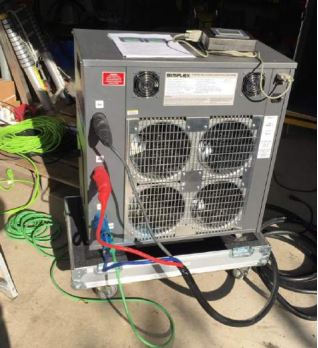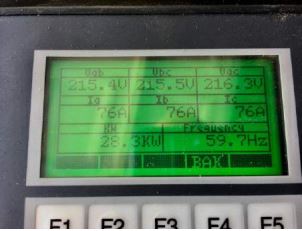Why You Should Load Your Generator

[October 2019] When the power goes out, you want your generator to go on. And stay on. This is not a result of chance – a regular maintenance plan is critical. But just turning on the generator each week or month and running for an hour or so, can give you a false sense of security. Richard Rudman explains why.
We have all read stories about or know someone who has had a diesel generator fail to start – at the worst possible time – when it is needed.
In my previous BDR article on generators, I focused on the need for regular maintenance, especially checking the starter batteries to make sure the engine will start when needed. Your planned maintenance program, regularly performed before any emergency condition, is very much an important way to ensure the generator will turn on when started.
However, once the engine starts, your diesel generator may still shut down after it comes up to speed and your manual or auto transfer switch puts it online. Not good! But you can reduce the possibility that this will happen.
Wet Stacking
“Wet stacking” is a condition in diesel engines in which unburned fuel passes on into the exhaust system.
The word “stacking” comes from the term stack for exhaust pipe or chimney stack. The oily exhaust pipe is therefore a “wet stack.” This definition comes straight from that font of all possible human knowledge: Wikipedia.
OK, maybe you do not have faith in Wikipedia, the NFPA (the National Fire Protection Association, in the 1996 edition of their NFPA 110 Code for Emergency and Standby Power Systems, refers to wet stacking as “the presence of unburned fuel or carbon, or both, in the exhaust system.”
The Cause of the Problem
The most common cause for your stacks to become wet is repeatedly testing the generator at no load or with a very light load.
Under such a light testing routine, the engine never gets up to its rated operating temperature. Oily residue and black carbon build up and your exhaust system gets “stacked” against you.
To avoid wet stacking, the NFPA recommends exercising the unit, at least monthly, for 30 minutes using a load that maintains the minimum exhaust gas temperatures, as recommended by the manufacturer or under operating temperature conditions – and at not less than 30 percent of the generator’s standby nameplate kW rating.
The Load Bank
There are many reasons that generators never get near their rated operating temperature for years, so what can you do if you suspect this condition exists in your generator set?
If it is not possible to run the generator set under full load for testing, you can simulate one with a device called a load bank. The portable three-phase load bank I own is rated at 110 kW, at 220 Volts or 480 Volts.

110 kW simplex load bank
with 3-phase, neutral and ground cables
It is really just a portable 3-phase electric heater designed to turn 3-phase power into calories.
To run/test a wet-stacked generator with a load bank you start out with a small load and gradually increase it. Caution: For obvious reasons, it is not a good idea to start out at full load.
If the generator is wet stacked you will see any fuel residue and black carbon depart dramatically, usually in the form of heavy, black smoke, as the load steps are increased.

Load bank display, producing a load of 76 Amps
per leg at 215 Volts, or just over 28 kW
After 30 minutes, your engine and its exhaust system should be as residue-and carbon free as you can get without taking it apart.
If You Do Not Have a Load Bank
A new load bank might set you back around $5k to $10k, depending upon the load capacity you need for your transmitter(s).
One alternative is calling your generator service company. They usually own a load bank. Their charge for this field service is customarily billed at the high hourly rate of a factory certified tech plus the load bank, etc.
As you can see, getting your own – and using it regularly – will keep your generator working much more reliably, without over stressing your budget each year.
– – –
Richard Rudman is a regular contributor to the BDR and is the owner of Remote Possibilities in Santa Paula, CA. Contact him at rar01@mac.com
